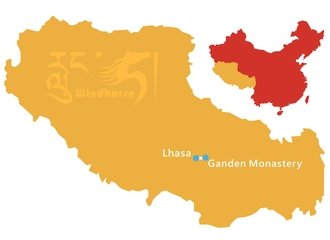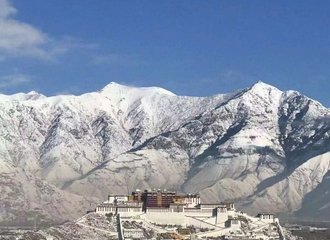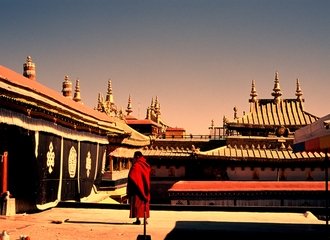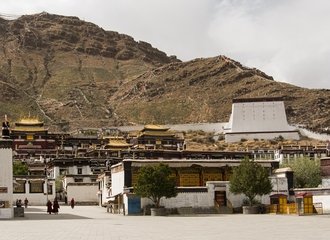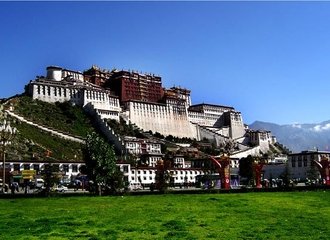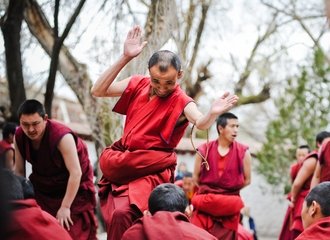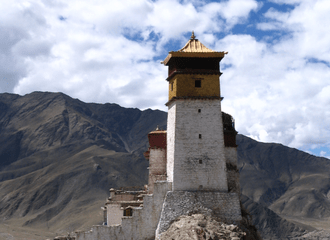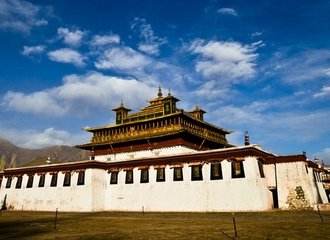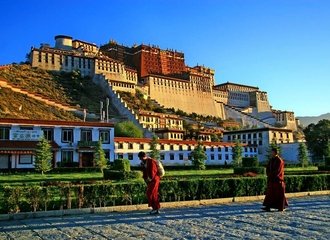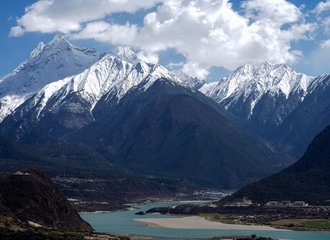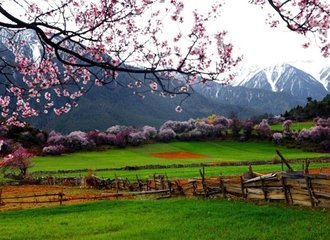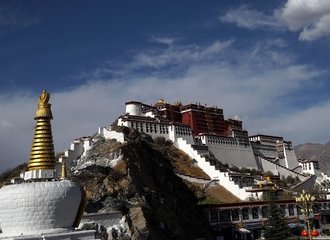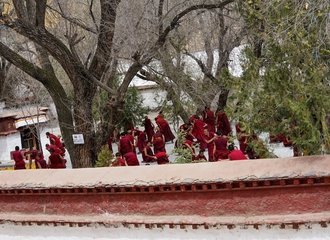Yunnan and Sichuan highway to Tibet
Currently, there are 3 ways to enter Tibet: overland, flight, and train. And more and more travelers are choosing to take an overland driving tour to Tibet. Driving to Tibet not only is full of challenging adventures but also brings unique rewards with exciting experiences and views of majestic peaks and breathtaking landscapes. Nowadays, there are 4 highways to and from Tibet in mainland China: Sichuan-Tibet Highway, Yunnan-Tibet Highway, Qinghai-Tibet Highway, and Xinjiang-Tibet Highway. However, here in this page, we mainly focus on introducing Sichuan-Tibet Highway and Yunnan-Tibet Highway for your reference.

Brief Introduction
Sichuan-Tibet Highway is the most precipitous highway in China, stretching over 2,100KM from Chengdu of Sichuan to Lhasa of Tibet with 14 steep mountains with an average altitude over 4,000 meters (13,123ft) and numerous dangerous sections. There is a dramatic altitude change along this route to Lhasa, ascending from 500 meters in the east up to over 4,000 meters in the west. This route takes you through breathtaking landscapes dotted with crystal-clear glaciers, vast grasslands, majestic snow-capped mountain peaks, turbulent rivers, deep valleys, and primeval forests as well as unique folk villages, which makes you intoxicated, hence its reputation of ‘The most beautiful landscape road in China’. It has two main routes: the northern route and southern route, which are connected by a highway between Chamdo and Bamda in Tibet. Both take about 8-10 days.
- The southern route is lower, wilder, and more alpine, passing fewer towns, monasteries, and stunning lakes, so it is more popular. It takes you through an ever-changing scenery ranging from warm spring to cold and snowing winter. The scenery of the southern route is more beautiful than the northern route, especially in Nyingchi.
- The northern route offers a range of scenery from forested alpine country to the high plateau of the Changtang with endless grassland and lakes and passes many large monasteries. Compared with the southern route, the northern route is higher, less populated, its scenery is more original and magnificent for its boundless pasturing areas.
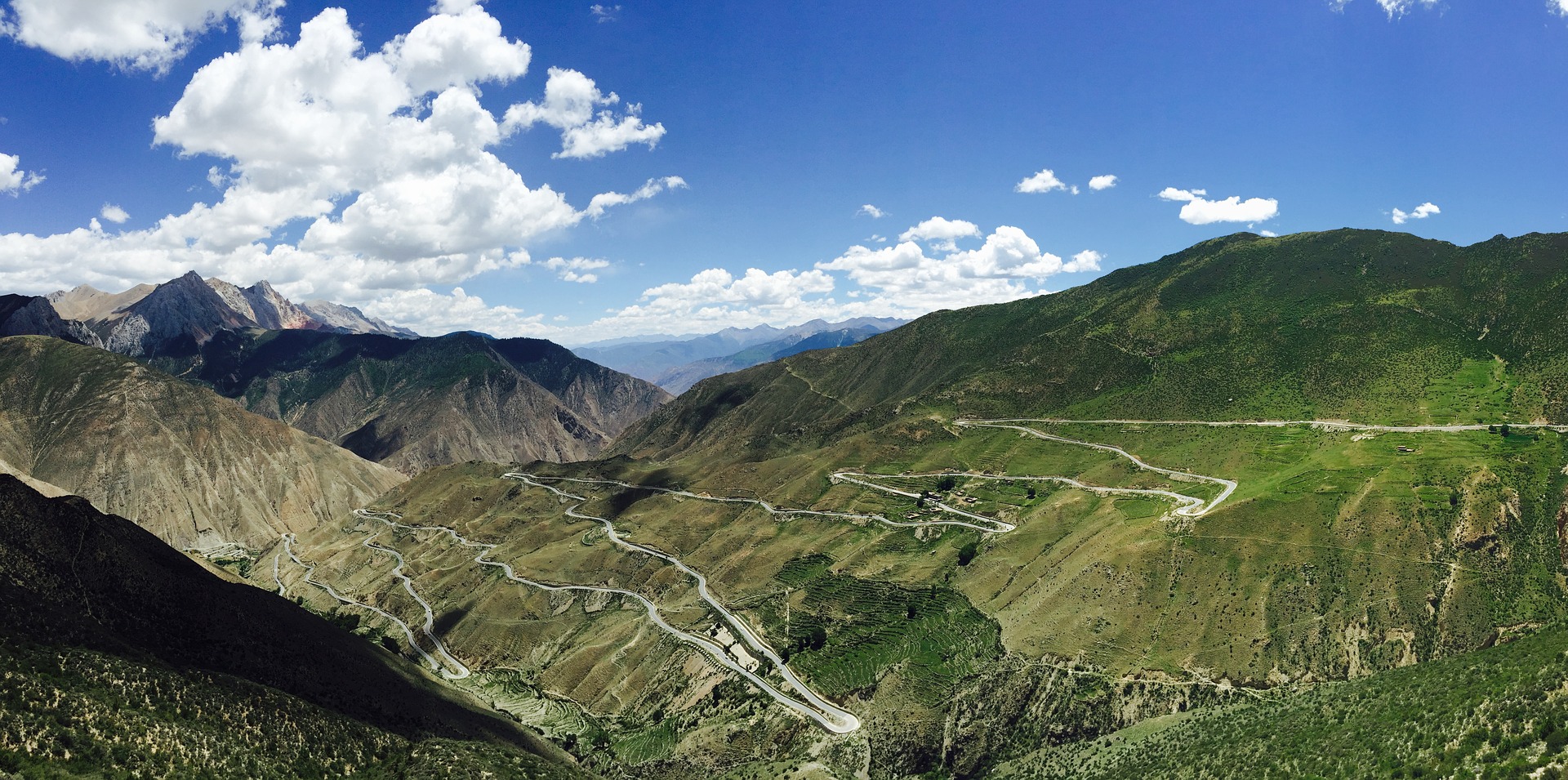
Another popular overland route to Tibet is from Yunnan, which was opened to traffic in 1974 and has a total length of over 2,200KM, and the trip takes about 7-10 days. It starts from Kunming of Yunnan in the south, passes through Dali, Lijiang, Shangri-la, Deqen to Markham of Tibet in the north and covers a distance of 1,020KM. It joins the southern Sichuan-Tibet highway in the north. With the highest altitude among the 4 highways, this route is a less beaten path for travelers. It was built along the ancient "Tea-Horse Ancient Road" mainly, running through the China-Burma Basin and the Hengduan Mountain Range. The highest point is Hongla Snow Mountain Pass (4,300 m/14,108 ft). The road leads through the spectacular landscape, with thick forests, high mountains, deep valleys, and fast-flowing rivers. As Lancang River and Jinsha River cut the Hengduan Mountain Range into many high mountains and deep valleys, when driving along the road going up and down in elevations through this area, you will experience different kinds of climates and landscapes en route.


What to see and routes outline
Southern Route of Sichuan-Tibet Highway: 2,142 KM
Chengdu (500 m) - Ya’an (580 m) - Luding (1,321 m) - Kangding (2,560 m) - Xinduqiao (3,300m) - Yajiang (2,640 m) - Litang (4,014 m) - Batang (2,560 m) - Markam (3,880 m) - Bamda (4,300 m) - Baxoi (3,260m) - Rawok (3,807 m) - Pomi (2,750m) - Tongmai (2,080 m) - Nyingchi (3,100 m) - Bayi (2,994 m) - Gongbo Gyamda (3,600 m) - Maizhokunggar (4,000m) - Lhasa (3,656 m)
The Southern Route of Sichuan-Tibetan Highway to Lhasa runs from Chengdu to Kangding by a detour to Hailuogou Glacier first, then passes over Zheduo mountain, reaches the world’s highest city - Litang where a grand horse racing festival is held every early August, visits Litang monastery, then drive down to Batang before climbing up into Tibet at Markham. Before driving into Batang, you may consider a 3 days’ worthwhile detour to Yading Nature Reserve which is reputed as ‘the last pure land on our blue planet’. Markham is the first town to Tibet, then continues over concertina passes to Dzogang and Pomda. From Pomda, join the Tibet western southern route to Lhasa via Rawok-Tso lake, Pomi, Basum-Tso lake in Baiyi.
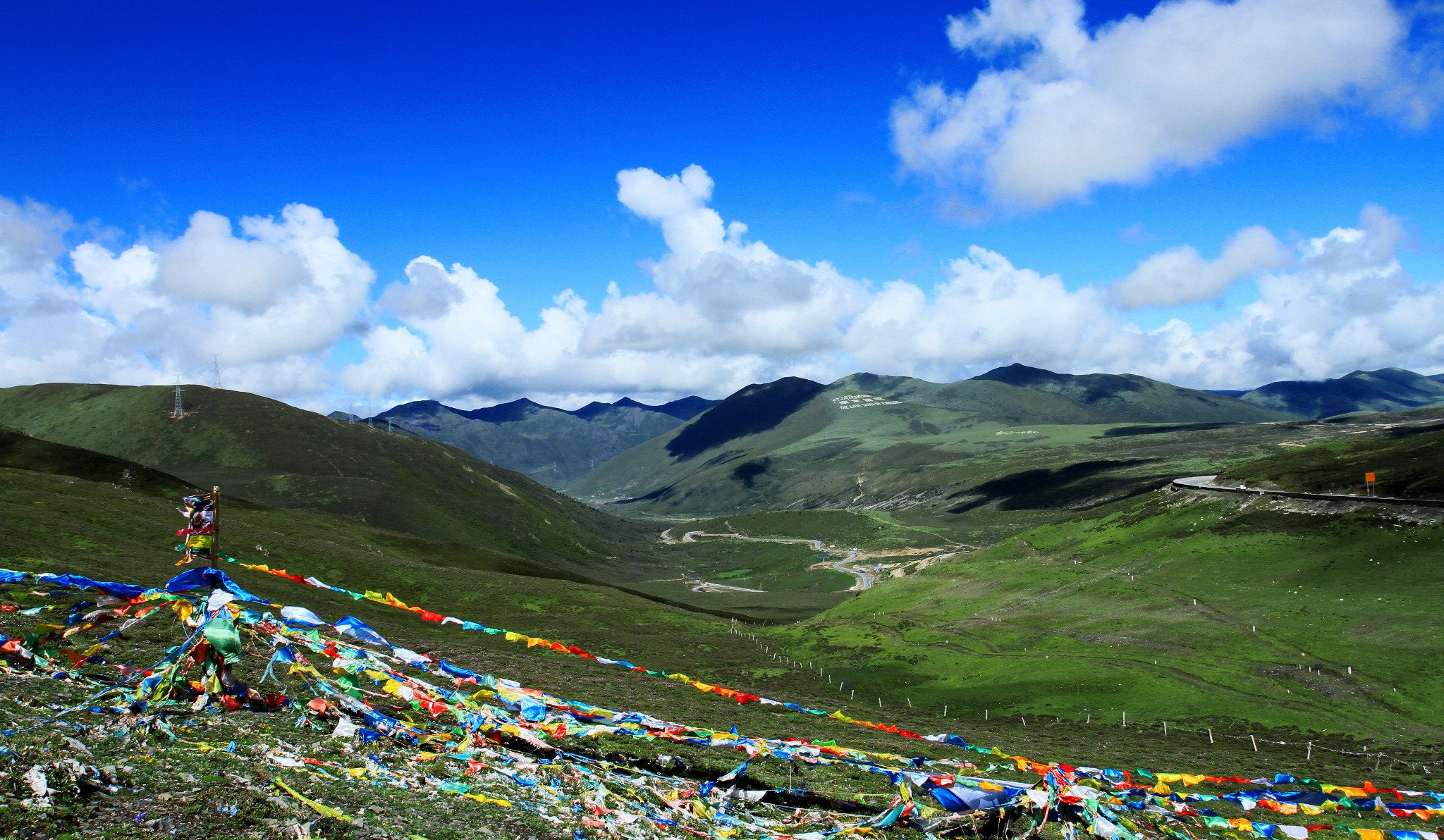
Northern Route of Sichuan-Tibet Highway: 2,412 KM
Chengdu (500 m) - Dujiangyan (727 m) - Wolong (1,200 m) - Siguniangshan Town (3,160 m) - Xiaojin (2,367 m) - Danba (1,893 m) - Bamei (3,500 m) - Daofu (3,245 m) - Luhou (3,510 m) - Garze (3,410 m) - Derge (3,188 m) - Jinshajiang River Bridge - Gyamda (3,650m) - Chamdo (3,240 m) - Dêngqên (3,850 m) - Baqên (4,150 m) - Nagqu (4,500 m) - Damxung (4,293 m) - Yangbajain (4,288m) - Lhasa (3,656 m)
The Northern Route of Sichuan-Tibetan Highway to Lhasa starts from Chengdu, you will see the Giant Panda from Wolong Nature Reserve, the Four girls' mountain peaks (6,250m), and overnight at Danba where you can visit Danba Ancient block towers in Suopo, the beautiful Jiaju Tibetan Village or Zhonglu Tibetan Village. Then passing Donggu Natural Reserve to Bamei, about 20km north Bamei visits the famous Tagong Monastery and other monasteries around Luohuo and Garze. Further to Derge Scripture Printing Press with a stop at the pretty Yihun La-Tso. From Derge you cross into Tibet proper over some wild passes to Chamdo, the biggest town in eastern Tibet. From Chamdo you will take the Tibet western northern route to Lhasa bypassing Riwoche, Sok, Nagqu.
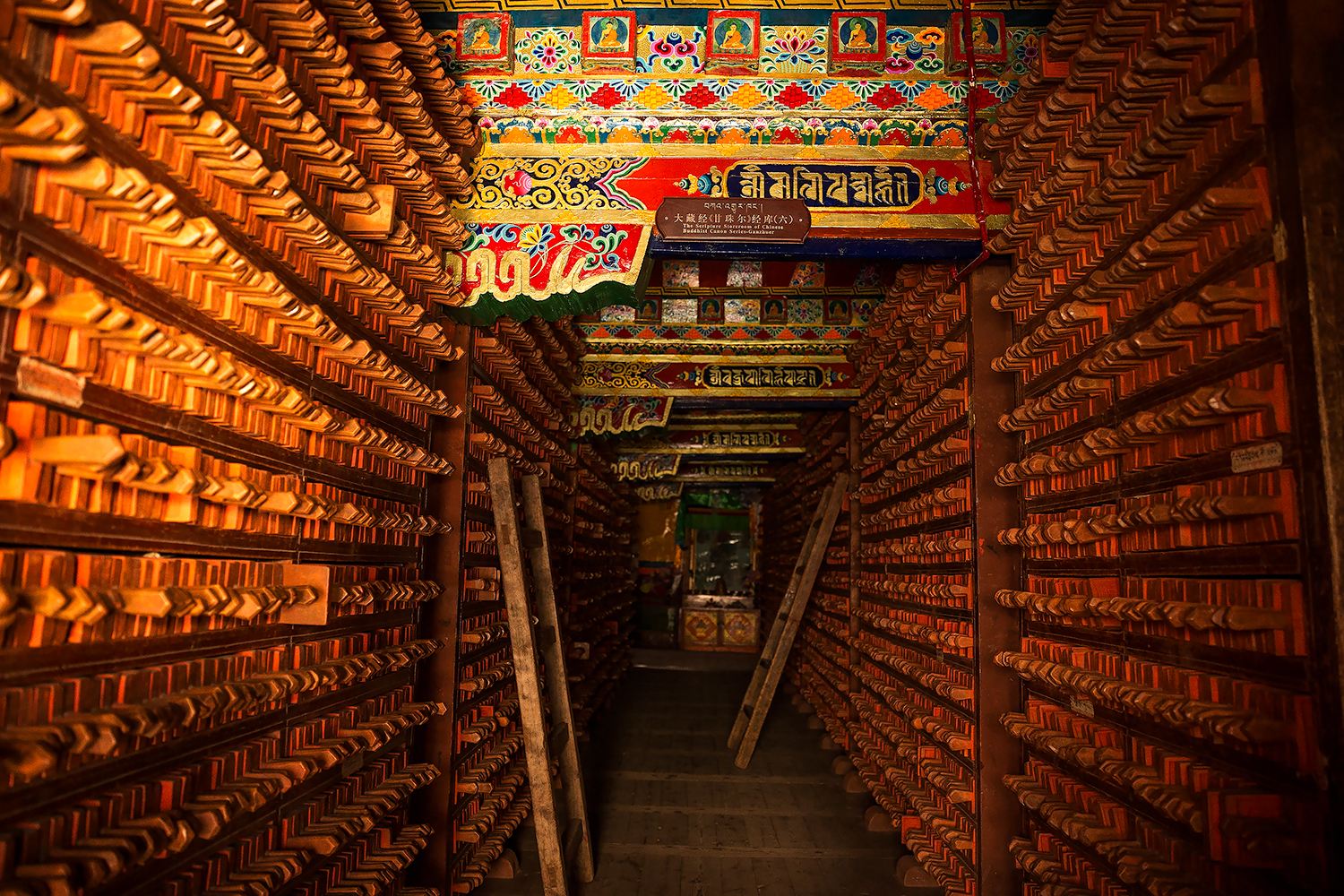
Yunnan-Tibet Highway: 2,200KM
Kunming (1,892 m) - Dali (2,052 m) - Lijiang (2,400 m) - Shangri-la (3,160 m) - Dêqên (3,300 m) - Yanjing (2,400 m) - Markam (3,880 m) - Bamda (4,300 m) - Baxoi (3,260m) - Rawok (3,807 m) - Pomi (2,750m) - Tongmai (2,080 m) - Nyingchi (3,100 m) - Bayi (2,994 m) - Gongbo Gyamda (3,600 m) - Maizhokunggar (4,000m) - Lhasa (3,656 m)
The Yunnan-Tibet Highway starts from Kunming, where you visit the famous stone forest in Lunan, then go to see the ancient Dali town and have a boating trip at Erhai Lake. After that, continue driving to Lijiang, one of four ancient towns in China, to see the famous Jade Dragon Snow Mountain and visit the traditional Naxi families there. On the way to Shangri-la, have a stop to see the Tiger Leaping Gorges and make a 2-3-day trek if interested. Further to Deqin to appreciate the beauties of the holy Mt. Meili and Lancang River Grand Canyon. Cross the Tibetan border from Yanjing, then another 111km to Markham join the Sichuan Southern route to Lhasa.
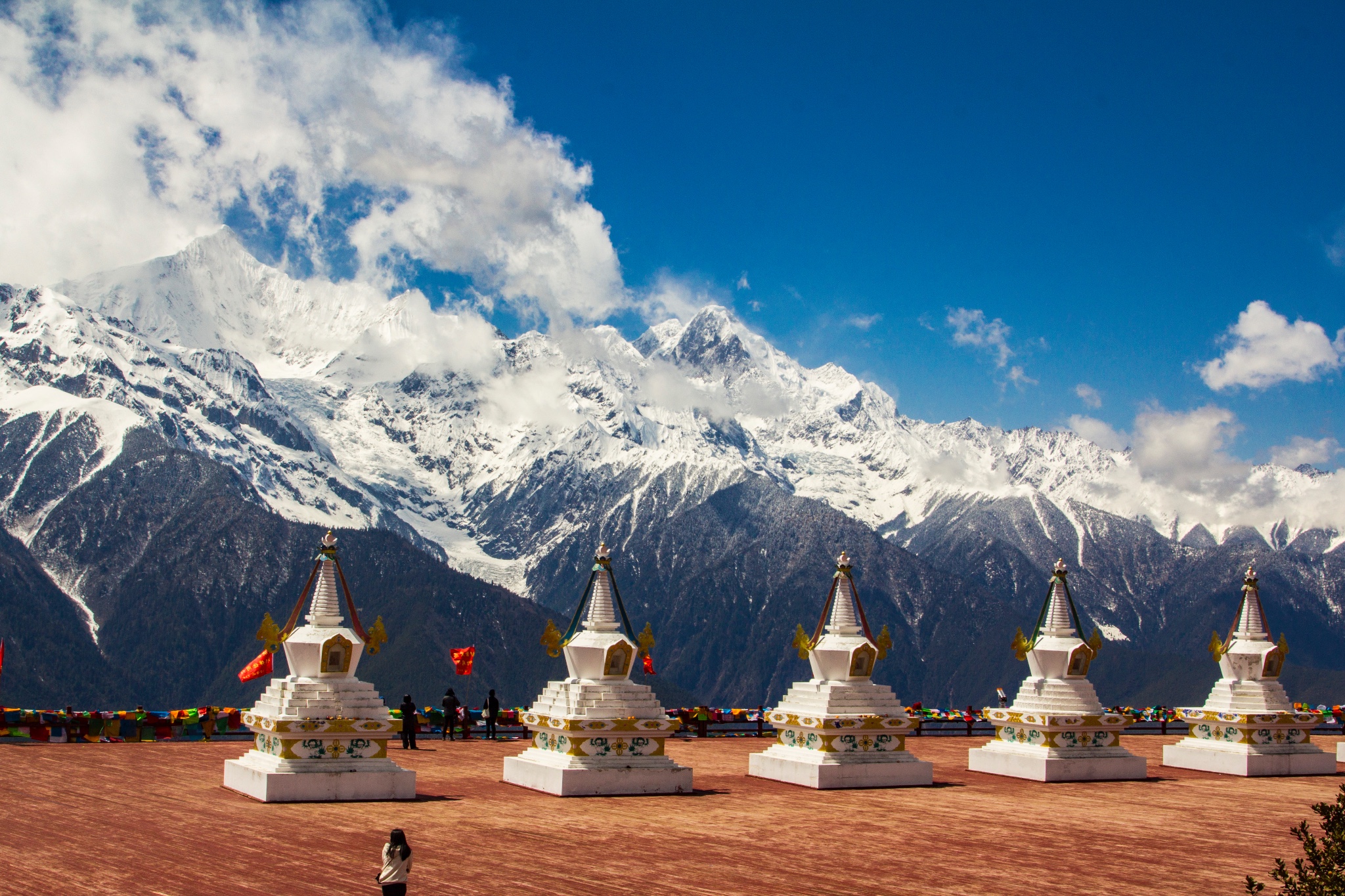

Travel policy
Unlike Tibet Autonomous Region, you are not required to join organized tours with permits or tour guides while traveling along the Sichuan part of Sichuan-Tibet Highway and the Yunnan part of Yunnan-Tibet Highway, it is possible for you to take the public transportations or hire a private vehicle with driver.
Upon your stepping into the borders between Sichuan/Yunnan and Tibet Autonomous Region, foreign travelers are required to take a pre-organized tour including travel permits, a tour guide, a private vehicle, and a driver. Another important reminder is that partly Chamdo and Nagqu prefecture could be closed without advanced notifications.
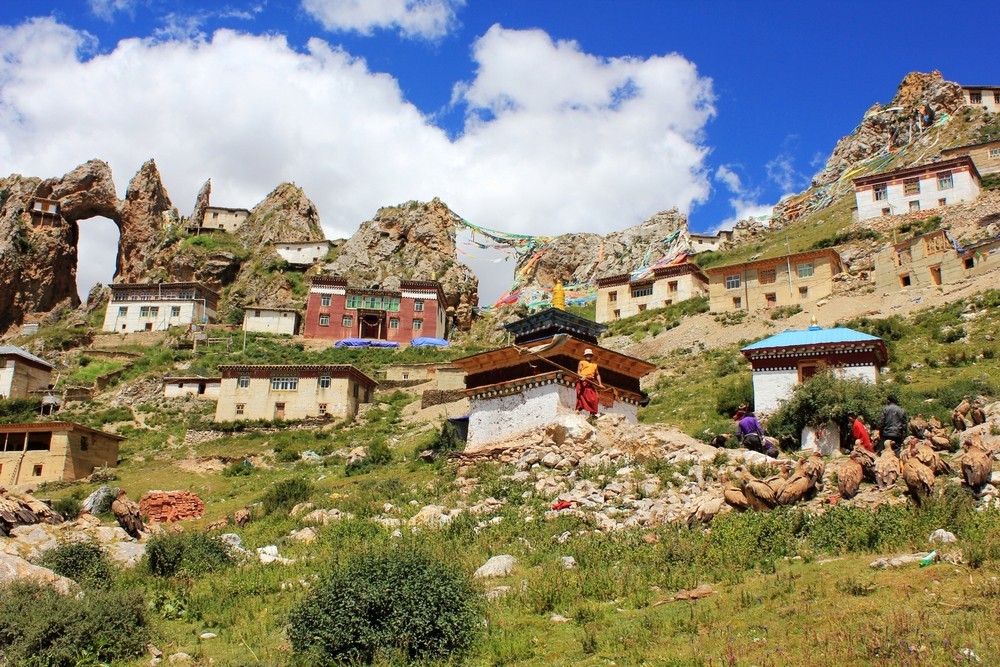

Best Time
The best time to take an overland tour via Sichuan-Tibet Highway is May and mid-August to October. And the best time via Yunnan-Tibet Highway is from August to October. During this period, the route has the sunniest days of the year and the weather is warm. Especially in September and October, the scenery along this highway is in its best shape with colorful leaves, snow-capped mountains, beautiful lakes, and lots of bright sunny days. While from June to August, it’s still good to travel along this route after a comprehensive preparation, to enjoy the lush greens and various flowers, and also to feel the warmest weather. However, please be aware of this monsoon season with lots of rainfall and landslides.

Useful Travel Tips
- As the driving along both highways will be mainly at an altitude between 3,000-4,000 meters, please do consult your doctor prior to departure, to check your physical fitness and plan a reasonable itinerary to well acclimate the altitude. It’s better to bring some medicine and portable oxygen inhalers to avoid the high-altitude sickness.
- Travelers should pack carefully and well for the extreme weather, due to the large temperature difference, it is advisable to bring clothes for different seasons and consider dressing in layers. In the high mountain area, it might be rainy, sunny, snowing alternately on a single day.
- Due to the strong UV rays and dry and thin air, travelers are vulnerable to sunburn, it’s highly recommended to prepare enough facilities to protect your skin and prevent yourself from sunburn, such as lip balms, hand lotion, moisturizing cream, sun cream, sun hat, sunglasses, etc.


